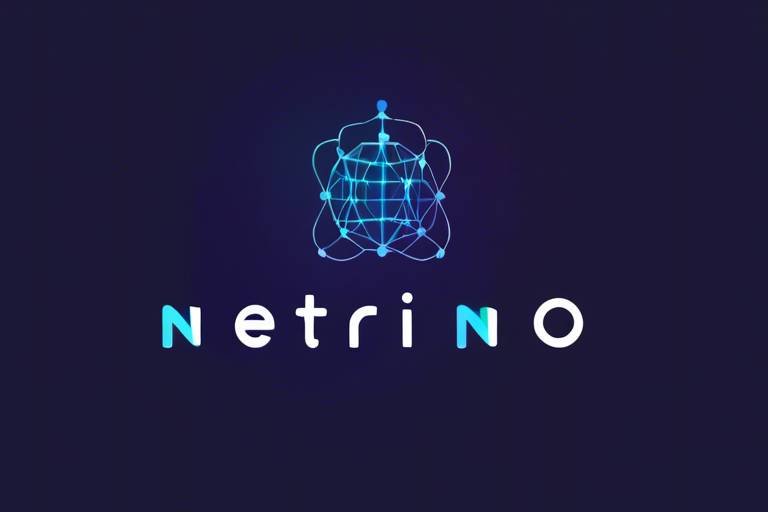Ren - Cross-Chain Asset Transfers Explained
In the rapidly evolving landscape of blockchain technology, the need for seamless asset transfers across different networks is more crucial than ever. Enter Ren, a pioneering protocol designed to facilitate cross-chain asset transfers with ease and efficiency. Imagine trying to send a letter across different countries, each with its own postal system; this is akin to how transferring assets between blockchains used to work. However, Ren acts as a universal postal service, ensuring that your assets reach their destination securely and swiftly.
At its core, Ren is not just a bridge between blockchains; it represents a significant leap towards achieving true decentralized finance (DeFi). The protocol allows users to transfer assets without relying on centralized exchanges, which can often be slow and cumbersome. This innovation opens up a plethora of opportunities for traders, investors, and everyday users alike. As we dive deeper into the workings of Ren, we'll uncover how its technology operates, the benefits it brings, and the potential challenges it faces in the ever-expanding world of blockchain interoperability.
Ren's approach is particularly significant because it addresses one of the biggest hurdles in the blockchain ecosystem: interoperability. With numerous blockchain networks in existence, the ability to transfer assets between these networks is essential for creating a more connected and efficient financial system. By leveraging Ren, users can enjoy a more fluid experience, akin to having a universal currency that works everywhere.
This article will explore the intricate details of Ren's technology, its core features, and what the future holds for cross-chain transfers. So, if you're curious about how Ren is reshaping the way we think about asset transfers in the DeFi space, you’re in the right place!
Cross-chain technology enables different blockchain networks to communicate and transfer assets seamlessly. This section explains the fundamentals of cross-chain interactions and their significance in the evolving blockchain ecosystem.
Ren Protocol serves as a bridge between various blockchains, facilitating asset transfers without the need for centralized exchanges. This section discusses how Ren achieves this and its core components.
Ren boasts several features, including privacy, security, and decentralization. Here, we explore these features and how they contribute to the protocol's effectiveness in cross-chain transactions.
Ren utilizes advanced cryptographic techniques to ensure user privacy during transactions. This subsection highlights the importance of privacy in blockchain transfers and how Ren addresses it.
Security is paramount in asset transfers. This section outlines the security protocols implemented by Ren to protect users and assets during cross-chain transactions.
Understanding the mechanics of Ren is crucial for grasping its functionality. This section breaks down the process of asset transfers through Ren, detailing each step involved.
Utilizing Ren for cross-chain transfers offers numerous advantages, such as increased liquidity and reduced transaction costs. This section discusses these benefits in detail.
Ren enhances liquidity across different blockchains, allowing users to access a wider range of assets. This subsection explains how this increased liquidity can benefit traders and investors.
Transferring assets through Ren can be more cost-effective compared to traditional methods. This section analyzes the cost benefits associated with using the Ren Protocol for cross-chain transactions.
Despite its advantages, Ren faces certain challenges and limitations. This section identifies these issues and discusses their potential impact on the protocol's adoption and functionality.
Scalability remains a challenge for many blockchain solutions, including Ren. This subsection examines the scalability issues Ren faces and potential solutions being explored.
Regulatory compliance is critical for the success of any blockchain project. This section discusses the regulatory challenges Ren may encounter and their implications for its operation.
The future of cross-chain transfers looks promising, with protocols like Ren leading the way. This section speculates on future developments and the potential evolution of cross-chain technology in the blockchain landscape.
- What is Ren Protocol?
Ren Protocol is a decentralized protocol that allows for the seamless transfer of assets across different blockchain networks without the need for centralized exchanges.
- How does Ren ensure privacy?
Ren utilizes advanced cryptographic techniques to maintain user privacy during transactions, ensuring that sensitive information remains confidential.
- What are the benefits of using Ren for cross-chain transfers?
Using Ren can enhance liquidity, reduce transaction costs, and provide a more efficient way to manage assets across different blockchains.
- What challenges does Ren face?
Ren faces challenges such as scalability issues and regulatory hurdles that could impact its adoption and functionality in the future.

Understanding Cross-Chain Technology
Cross-chain technology is the backbone of the modern blockchain ecosystem, enabling different blockchain networks to communicate and transfer assets seamlessly. Imagine it as a universal translator that allows various blockchains to speak the same language, thus facilitating transactions that were once isolated within individual networks. This innovation is crucial because, without cross-chain capabilities, the potential of decentralized finance (DeFi) and blockchain interoperability would be significantly limited.
At its core, cross-chain technology allows for the transfer of assets across multiple blockchain platforms. This means that you can send Bitcoin to a network that primarily operates on Ethereum, for example. The implications of this are massive, as it opens up a world of possibilities for traders, investors, and developers alike. The ability to utilize assets from one blockchain on another can enhance liquidity, foster innovation, and create a more interconnected financial ecosystem.
One of the most significant aspects of cross-chain technology is its potential to break down the silos that have traditionally existed between different blockchain networks. As the blockchain landscape continues to evolve, the importance of interoperability becomes increasingly clear. Here are a few key points that highlight the significance of cross-chain interactions:
- Enhanced Asset Mobility: Users can transfer assets freely, making it easier to leverage opportunities across different platforms.
- Increased Liquidity: By allowing assets to flow between networks, cross-chain technology enhances overall market liquidity, benefiting traders and investors.
- Broader Access to DeFi: Users can tap into a wider range of decentralized finance applications, maximizing their investment potential.
However, the implementation of cross-chain technology is not without challenges. Issues such as security vulnerabilities and the complexity of transaction processes can pose significant hurdles. Additionally, the need for effective consensus mechanisms across different blockchains is paramount to ensure that transactions are validated accurately and efficiently.
In summary, cross-chain technology represents a significant leap forward in the realm of blockchain interoperability. By enabling seamless communication and asset transfers between different networks, it sets the stage for a more integrated and functional decentralized finance landscape. As we continue to explore the capabilities of cross-chain solutions, the future looks bright for innovation and collaboration in the blockchain space.

The Role of Ren Protocol
The Ren Protocol is a groundbreaking solution in the world of blockchain technology, acting as a vital bridge between different blockchain networks. Imagine trying to send a letter from one country to another without a postal service; it would be a nightmare! Similarly, without a reliable method for cross-chain asset transfers, the potential of decentralized finance (DeFi) remains largely untapped. Ren steps in to fill this gap, enabling seamless communication and transfers of assets across various blockchain platforms without relying on centralized exchanges.
At its core, Ren Protocol utilizes a unique set of technologies to facilitate these transfers. It allows users to convert their assets into a format that can be used on other chains effortlessly. This means that, for example, you can take your Bitcoin and use it on Ethereum without having to sell it first. This is made possible through a process called "wrapping," where your original asset is locked in a smart contract while a corresponding token is minted on the target blockchain.
One of the standout features of Ren is its decentralized nature. Unlike traditional exchanges, which can be vulnerable to hacks and regulatory scrutiny, Ren operates on a decentralized network of nodes that work together to ensure asset transfers are executed securely and efficiently. This decentralization not only enhances security but also promotes trust among users, as there is no single point of failure.
To better understand how Ren works, let's break down its core components:
| Component | Description |
|---|---|
| RenVM | The virtual machine that powers the Ren Protocol, enabling cross-chain transactions. |
| Darknodes | Decentralized nodes that participate in the network, securing and facilitating asset transfers. |
| Wrapped Assets | Tokens that represent the original assets on different blockchains, allowing for interoperability. |
By leveraging these components, Ren Protocol not only simplifies the process of asset transfers but also enhances the overall user experience. Users can easily interact with multiple blockchains, expanding their investment opportunities and access to various DeFi applications. This is particularly beneficial in today's fast-paced market, where agility and flexibility are key to staying ahead.
Furthermore, the implications of Ren's ability to facilitate cross-chain transactions are profound. As more users and projects adopt Ren, we can expect to see increased liquidity across the blockchain ecosystem. This is akin to opening new trade routes in a bustling marketplace, allowing for more efficient exchanges and a broader range of goods and services. The more interconnected the blockchain networks become, the more robust and resilient the entire ecosystem will be.
In conclusion, the Ren Protocol plays a crucial role in the evolution of blockchain interoperability. By providing a decentralized, secure, and efficient method for cross-chain asset transfers, it not only enhances the user experience but also paves the way for a more interconnected and thriving DeFi landscape. As we continue to explore the potential of blockchain technology, Ren stands out as a key player in shaping the future of finance.
- What is the primary function of the Ren Protocol?
Ren Protocol facilitates cross-chain asset transfers, allowing users to move assets between different blockchain networks without relying on centralized exchanges. - How does Ren ensure the security of asset transfers?
Ren employs a decentralized network of nodes, known as Darknodes, to execute and secure transactions, minimizing the risk of hacks and fraud. - What are wrapped assets?
Wrapped assets are tokens that represent original assets on different blockchains, enabling users to utilize their assets across multiple platforms. - Can I use Ren with any blockchain?
Ren is designed to work with various blockchains, enhancing interoperability and allowing users to access a wider range of DeFi applications.

Key Features of Ren
Ren Protocol stands out in the crowded blockchain space due to its unique features that address some of the most pressing challenges in cross-chain asset transfers. One of the most significant aspects is its emphasis on privacy. In a world where data breaches and privacy concerns are rampant, Ren uses advanced cryptographic techniques to ensure that users can transfer their assets without exposing their identities or transaction details. This is akin to sending a letter in a sealed envelope instead of a postcard, where anyone can read the contents.
Another critical feature is security. In the realm of digital finance, security is not just an option; it's a necessity. Ren implements robust security protocols to safeguard users' assets during cross-chain transactions. Imagine trying to cross a busy highway; you wouldn't just walk across without looking. Similarly, Ren ensures that users' assets are protected from potential threats while they traverse different blockchain networks.
Furthermore, Ren is built on the principle of decentralization. Unlike traditional financial systems that rely on central authorities, Ren operates in a decentralized manner, meaning that no single entity has control over the protocol. This decentralized structure not only enhances security but also fosters trust among users. When you know that no one can manipulate the system, you feel more secure in your transactions, much like how a public park feels safer when it’s open to everyone rather than being locked away.
Additionally, Ren's architecture is designed to be interoperable with various blockchain networks. This means that users can easily transfer assets across different platforms without the need for cumbersome processes or intermediaries. Imagine trying to communicate with someone who speaks a different language; you would need a translator. Ren acts as that translator, facilitating smooth interactions between disparate blockchain ecosystems.
In summary, the key features of Ren Protocol—privacy, security, decentralization, and interoperability—work together to create a robust solution for cross-chain asset transfers. They not only enhance the user experience but also pave the way for greater adoption of decentralized finance (DeFi) and blockchain technology as a whole.
- What is Ren Protocol? Ren Protocol is a decentralized platform that enables seamless cross-chain asset transfers without relying on centralized exchanges.
- How does Ren ensure user privacy? Ren utilizes advanced cryptographic techniques to protect user identities and transaction details during transfers.
- Is Ren secure? Yes, Ren implements robust security measures to safeguard users' assets throughout the transfer process.
- Can I transfer assets between any blockchain using Ren? Ren is designed to facilitate interoperability between various blockchain networks, making it easier to transfer assets across different platforms.
- What are the benefits of using Ren for cross-chain transfers? Using Ren can enhance liquidity, reduce transaction costs, and provide a more secure and private way to transfer assets.

Privacy Mechanisms
In the world of blockchain, where transparency reigns supreme, the concept of privacy can seem like a paradox. Yet, Ren Protocol skillfully navigates this dichotomy by implementing advanced cryptographic techniques that ensure user privacy during transactions. Imagine a bustling marketplace where everyone can see the goods being exchanged, but the identities of the buyers and sellers remain shrouded in mystery. This is precisely what Ren achieves, allowing users to transfer assets across different blockchains without revealing their personal information.
At the heart of Ren's privacy mechanisms lies a sophisticated architecture designed to obscure transaction details. Utilizing a technology called Zero-Knowledge Proofs, Ren allows one party to prove to another that a statement is true without revealing any information apart from the fact that the statement is indeed true. This is akin to showing a ticket at a concert without disclosing your entire life story to the ticket inspector. By doing so, Ren enhances user anonymity while maintaining the integrity of the transaction process.
Moreover, Ren employs a decentralized network of nodes known as Darknodes. These nodes play a crucial role in facilitating transactions while ensuring that sensitive data remains confidential. When a user initiates a transfer, the transaction is processed through these Darknodes, which do not store any identifiable information about the users involved. Instead, they work collectively to validate and execute transactions, thus fortifying the privacy of each participant. This decentralized approach not only mitigates the risk of data breaches but also aligns with the core principles of decentralization and trustlessness that underpin blockchain technology.
Ren's commitment to privacy is not just a technical feature; it's a fundamental principle that enhances user trust. In an era where data privacy concerns are paramount, Ren's ability to facilitate secure and private transactions positions it as a pioneering solution in the realm of cross-chain asset transfers. The implications of this privacy-first approach extend beyond individual users; they foster a broader acceptance of blockchain technology in various sectors, including finance, healthcare, and beyond.
In conclusion, Ren Protocol's innovative privacy mechanisms not only safeguard user identities but also pave the way for a more inclusive and secure blockchain ecosystem. As we move forward, the importance of privacy in decentralized finance cannot be overstated. It is this blend of privacy, security, and decentralization that makes Ren a standout player in the evolving landscape of cross-chain technology.

Security Measures
When it comes to cross-chain transactions, security isn't just an option—it's a necessity. The Ren Protocol understands this fundamental truth and has implemented a robust suite of security measures to protect users and their assets. At the heart of Ren's security framework is the use of decentralized mechanisms that eliminate single points of failure, making it significantly more resilient than traditional centralized exchanges.
One of the key components of Ren's security strategy is its use of multi-signature wallets. This means that transactions require multiple signatures from different parties before they can be executed. This not only enhances security but also adds an additional layer of verification, ensuring that no single entity can manipulate the process. Furthermore, Ren employs cryptographic proofs to guarantee the integrity of transactions. These proofs act as a digital fingerprint for each transaction, enabling users to verify that their assets have been securely transferred without the risk of tampering.
Additionally, Ren utilizes a network of dark nodes—a decentralized network of nodes that validate and facilitate transactions. These nodes operate under strict protocols, ensuring that they cannot be easily compromised. The use of dark nodes also means that the protocol can maintain user anonymity, which is increasingly important in today's digital landscape. By keeping user identities private, Ren mitigates the risk of targeted attacks that could result from revealing user information.
It's also worth noting that Ren continuously undergoes security audits by third-party firms. These audits help identify vulnerabilities and ensure that the protocol adheres to industry best practices. In an ever-evolving landscape where threats are constantly emerging, having regular security assessments is crucial. By staying ahead of potential risks, Ren not only protects its users but also builds trust within the broader blockchain community.
In summary, the security measures implemented by the Ren Protocol are comprehensive and multifaceted. From multi-signature wallets to the use of dark nodes and regular security audits, Ren prioritizes the safety of its users and their assets. This commitment to security not only enhances the user experience but also positions Ren as a leader in the cross-chain asset transfer space.
- What is Ren Protocol? Ren Protocol is a decentralized platform that facilitates cross-chain asset transfers without relying on centralized exchanges.
- How does Ren ensure user privacy? Ren employs advanced cryptographic techniques and dark nodes to keep user identities anonymous during transactions.
- Are transactions on Ren secure? Yes, Ren utilizes multi-signature wallets, cryptographic proofs, and undergoes regular security audits to ensure the safety of transactions.
- Can I transfer any asset using Ren? Ren supports a variety of assets, but it's essential to check the specific tokens available for transfer on the platform.
- What are the benefits of using Ren for cross-chain transfers? Benefits include enhanced liquidity, cost efficiency, and improved security compared to traditional methods.

How Ren Works
Understanding how Ren operates is essential to appreciating its role in the blockchain ecosystem. At its core, Ren utilizes a unique mechanism that allows users to transfer assets across different blockchain networks without the need for a centralized intermediary. This is achieved through a series of steps that ensure both security and efficiency. The process begins when a user wants to transfer an asset, say Bitcoin, from the Bitcoin blockchain to Ethereum. The user initiates this transaction through a Ren-enabled wallet or platform.
Once the transaction is initiated, the asset is sent to a RenVM (Ren Virtual Machine), a decentralized network of nodes that facilitate these transfers. The RenVM acts as a custodian for the asset, locking it in a smart contract on the source blockchain. This step is crucial because it ensures that the asset cannot be double-spent or lost during the transfer process.
After the asset is securely locked, the RenVM generates a corresponding wrapped asset on the destination blockchain. For instance, in our example, a wrapped version of Bitcoin (renBTC) is created on Ethereum. This wrapped asset is an ERC-20 token that represents the original Bitcoin, allowing it to be used seamlessly within the Ethereum ecosystem.
The entire process can be summarized in the following steps:
- Asset Locking: The original asset is locked in a smart contract on the source blockchain.
- Wrapped Asset Creation: A new token is minted on the destination blockchain, representing the locked asset.
- Transfer Completion: The user can now utilize the wrapped asset on the new blockchain.
One of the standout features of Ren is its decentralization. Unlike traditional exchanges, which may be vulnerable to hacks or fraud, Ren's architecture distributes control among multiple nodes, enhancing security and reliability. Moreover, the use of advanced cryptographic techniques ensures that user privacy is maintained throughout the transaction process.
To illustrate this further, consider the following table that outlines the key components involved in a Ren asset transfer:
| Step | Description |
|---|---|
| 1 | User initiates a transfer from one blockchain to another. |
| 2 | Asset is locked in a smart contract on the source blockchain. |
| 3 | RenVM generates a wrapped asset on the destination blockchain. |
| 4 | User receives and can utilize the wrapped asset on the new blockchain. |
This innovative process not only streamlines asset transfers but also opens up a world of possibilities for users looking to leverage the benefits of multiple blockchains. With Ren, the barriers that once existed between different blockchain networks are gradually being dismantled, paving the way for a more interconnected and versatile decentralized finance (DeFi) landscape.

Benefits of Using Ren
Utilizing the Ren Protocol for cross-chain transfers comes with a plethora of advantages that can significantly enhance your experience in the realm of decentralized finance (DeFi). One of the most compelling benefits is the increased liquidity it provides across various blockchain networks. Imagine being able to access a wider array of digital assets seamlessly, without the usual bottlenecks that plague traditional exchanges. With Ren, users can tap into different liquidity pools, making it easier to trade and invest in a diverse range of cryptocurrencies. This is akin to having a universal remote that controls multiple devices, simplifying your interactions with the digital asset world.
Moreover, the cost efficiency associated with using Ren is another standout feature. Traditional methods of transferring assets often come with hefty fees and long processing times. In contrast, Ren minimizes these costs, allowing users to save money while maximizing their trading potential. By eliminating the need for intermediaries, Ren not only speeds up transactions but also reduces the fees typically associated with cross-chain transfers. Think of it as a shortcut through a congested highway—saving both time and money.
In addition to liquidity and cost savings, the Ren Protocol also fosters an environment of decentralization. This is crucial in today’s blockchain landscape where users are increasingly wary of central authorities controlling their assets. Ren operates without a central point of failure, ensuring that transactions remain secure and that users maintain control over their funds. This decentralization enhances trust, as users can engage in transactions knowing that they are not at the mercy of a single entity. It’s like having a community garden where everyone contributes and shares the harvest, rather than relying on a single gardener who might not have everyone’s best interests at heart.
To summarize, here are some key benefits of using Ren for cross-chain asset transfers:
- Enhanced Liquidity: Access to a broader range of assets across multiple blockchains.
- Cost Efficiency: Reduced transaction fees and faster processing times.
- Decentralization: Increased trust and control over assets without reliance on central authorities.
As we continue to explore the advantages of the Ren Protocol, it becomes clear that its innovative approach not only simplifies the process of cross-chain transfers but also opens up new avenues for traders and investors alike. With the ever-evolving landscape of blockchain technology, Ren is poised to play a pivotal role in shaping the future of asset transfers, making it an essential tool for anyone looking to navigate the world of DeFi.
1. What is the Ren Protocol?
Ren Protocol is a decentralized protocol that facilitates cross-chain asset transfers, allowing users to move cryptocurrencies between different blockchain networks without the need for centralized exchanges.
2. How does Ren ensure privacy during transactions?
Ren employs advanced cryptographic techniques to ensure that user transactions remain private and secure, protecting users' identities and transaction details.
3. What are the main benefits of using Ren for cross-chain transfers?
The main benefits include enhanced liquidity, cost efficiency, and decentralization, which together create a more user-friendly and secure environment for asset transfers.
4. Are there any challenges associated with using Ren?
Yes, while Ren offers many advantages, it also faces challenges such as scalability concerns and regulatory hurdles that could impact its adoption and functionality.

Enhanced Liquidity
When it comes to the world of cryptocurrency, liquidity is king. Think of liquidity as the lifeblood of the market; without it, assets can become stagnant, making it difficult for traders and investors to buy or sell at desirable prices. This is where the Ren Protocol truly shines, as it enhances liquidity across various blockchain networks, creating a seamless experience for users. By enabling the transfer of assets between blockchains, Ren allows users to tap into a broader range of assets, effectively increasing the available liquidity in the ecosystem.
Imagine you are at a bustling marketplace filled with different stalls, each offering unique products. If you can only shop at one stall, your options are limited. However, if there’s a way to move freely between all the stalls, you can access a diverse array of products, making it easier to find what you need. This analogy perfectly illustrates how Ren facilitates cross-chain asset transfers, allowing users to navigate through multiple blockchains without the constraints of traditional systems.
Moreover, the increased liquidity brought by Ren can significantly benefit not just individual traders but the entire market. Here’s how:
- Improved Price Discovery: With more assets available across different platforms, the chances of finding better prices for trades increase, leading to a more efficient market.
- Reduced Slippage: When trading large amounts of cryptocurrency, slippage—a situation where the price at which a trade executes differs from the expected price—can be a concern. Enhanced liquidity minimizes this risk, ensuring that trades can be executed closer to the intended price.
- Attracting More Investors: A liquid market is often more appealing to both retail and institutional investors. The ability to move assets freely across chains encourages more participants to enter the market, thereby increasing overall trading volume.
In conclusion, the Ren Protocol not only simplifies the process of transferring assets between different blockchains but also enhances liquidity in a way that benefits everyone involved. As more users adopt this innovative technology, we can expect to see a more vibrant and dynamic marketplace, ultimately pushing the boundaries of what’s possible in the world of decentralized finance.
Q: What is cross-chain liquidity?
A: Cross-chain liquidity refers to the ability to trade and transfer assets seamlessly across different blockchain networks, enhancing the overall availability of assets.
Q: How does Ren Protocol improve liquidity?
A: Ren Protocol allows users to transfer assets between blockchains without relying on centralized exchanges, increasing the number of available trading pairs and enhancing market efficiency.
Q: Why is liquidity important in cryptocurrency trading?
A: Liquidity is crucial because it affects the ease of buying and selling assets, impacts pricing, and influences the overall health of the market.

Cost Efficiency
When it comes to transferring assets across different blockchain networks, is a game changer. Traditional methods of asset transfer often involve hefty fees, long processing times, and the need for intermediaries. However, the Ren Protocol flips this narrative on its head, offering a streamlined, cost-effective solution for users. By eliminating the need for centralized exchanges, Ren significantly reduces transaction costs, making it an attractive option for both casual users and seasoned traders.
One of the standout features of Ren is its ability to facilitate cross-chain transactions without the overhead typically associated with traditional finance. This means that users can transfer assets directly from one blockchain to another with minimal fees. For instance, while conventional exchanges might charge a percentage of the transaction amount as a fee, Ren's decentralized approach allows for flat fees that are often much lower. This is particularly beneficial for high-value transactions, where even a small percentage can translate into significant costs.
Moreover, Ren's architecture is designed to optimize transaction efficiency. By utilizing a network of decentralized nodes, the protocol minimizes the time and resources required to complete a transfer. This not only helps in reducing costs but also enhances the overall user experience. Imagine trying to send money to a friend across the globe; wouldn’t you prefer a method that’s quick, easy, and won’t leave you with a dent in your wallet? That's exactly what Ren offers.
To put it into perspective, let’s take a look at a comparison of transaction fees between Ren and traditional centralized exchanges:
| Method | Typical Transaction Fee | Processing Time |
|---|---|---|
| Centralized Exchange | 1-3% of transaction amount | 30 minutes to several hours |
| Ren Protocol | Flat fee (often below $1) | Under 10 minutes |
This table clearly illustrates the stark contrast in cost and efficiency between Ren and traditional methods. With Ren, users can save money while enjoying faster transaction times, allowing them to reinvest those savings into more assets or use them for other purposes.
In conclusion, the cost efficiency of the Ren Protocol is not just a minor benefit; it’s a core reason why many are turning to decentralized finance. By lowering transaction costs and simplifying the process, Ren is paving the way for a more accessible and efficient financial ecosystem. As the world continues to embrace blockchain technology, solutions like Ren will undoubtedly play a pivotal role in shaping the future of asset transfers.

Challenges and Limitations
While Ren Protocol has made significant strides in facilitating cross-chain asset transfers, it is not without its challenges and limitations. One of the primary concerns is scalability. As the number of users and transactions increases, the underlying infrastructure must be capable of handling this growth without compromising on performance. Currently, Ren's architecture may face bottlenecks, especially during peak usage times, which could lead to slower transaction speeds and higher fees.
Another major hurdle is regulatory compliance. The decentralized nature of blockchain technology often clashes with existing regulatory frameworks. As governments around the world begin to take a closer look at cryptocurrencies and DeFi, Ren could face scrutiny that may affect its operations. Ensuring compliance with these regulations is crucial for the long-term sustainability of the protocol.
Furthermore, user adoption is a critical factor in the success of any blockchain project. While Ren offers innovative solutions, it still needs to attract a broader user base. Many potential users may be hesitant to adopt new technologies due to a lack of understanding or fear of security risks. Education and outreach efforts are essential to bridge this gap and foster greater acceptance of Ren's offerings.
Lastly, interoperability with other blockchain networks remains a complex challenge. Although Ren aims to facilitate seamless transfers across different blockchains, each network has its own set of protocols and standards. This can lead to compatibility issues that may hinder the efficiency of cross-chain transactions. Ongoing development and collaboration with other blockchain projects will be necessary to overcome these barriers.
In summary, while Ren Protocol presents a promising solution for cross-chain asset transfers, it must navigate several challenges, including scalability, regulatory hurdles, user adoption, and interoperability. Addressing these limitations will be essential for Ren to realize its full potential in the decentralized finance landscape.
- What is Ren Protocol?
Ren Protocol is a decentralized protocol that enables cross-chain asset transfers without the need for centralized exchanges. - How does Ren ensure user privacy?
Ren utilizes advanced cryptographic techniques to protect user privacy during transactions. - What are the main challenges faced by Ren?
Ren faces challenges including scalability, regulatory compliance, user adoption, and interoperability. - Can I use Ren for all cryptocurrencies?
Ren supports a variety of cryptocurrencies, but it's essential to check which specific assets are compatible.

Scalability Concerns
Scalability is one of the most pressing challenges that blockchain protocols face today, and the Ren Protocol is no exception. As the demand for cross-chain asset transfers grows, the ability of Ren to handle a high volume of transactions efficiently becomes critical. When we talk about scalability, we refer to the system's capacity to manage increased loads without compromising performance. Think of it like a highway: if more cars start using it than it was designed for, traffic jams will ensue. Similarly, if Ren cannot scale effectively, users may experience delays, higher fees, or even transaction failures.
One of the primary scalability concerns for Ren is its reliance on the Darknodes that facilitate the protocol's operations. These nodes are responsible for processing transactions and maintaining the overall network. As the number of users increases, the load on these Darknodes also rises. If too many users attempt to execute transactions simultaneously, it can lead to congestion. This situation can be likened to a crowded restaurant where the kitchen struggles to keep up with orders, resulting in longer wait times for customers.
To address these scalability issues, the Ren team is actively exploring several potential solutions:
- Layer 2 Solutions: Implementing layer 2 technologies that can process transactions off the main blockchain can significantly enhance speed and efficiency.
- Network Upgrades: Regular updates and optimizations to the existing infrastructure can help improve performance and increase capacity.
- Incentivizing More Darknodes: Encouraging more users to run Darknodes can distribute the workload more evenly across the network.
Despite these challenges, it’s essential to remain optimistic. The blockchain community is known for its innovative spirit, and the Ren Protocol is committed to finding effective solutions to these scalability concerns. As technology evolves and more developers focus on enhancing blockchain capabilities, we can expect Ren to adapt and grow, ensuring that it remains a viable option for cross-chain asset transfers.
Q1: What is the Ren Protocol?
A1: The Ren Protocol is a decentralized platform that facilitates cross-chain asset transfers, allowing users to move assets between different blockchains without relying on centralized exchanges.
Q2: Why is scalability important for the Ren Protocol?
A2: Scalability is crucial because it determines how well the protocol can handle increased transaction volumes. Without effective scalability, users may face delays and higher costs during transactions.
Q3: How does Ren ensure user privacy during transactions?
A3: Ren employs advanced cryptographic techniques to protect user privacy, ensuring that transaction details remain confidential while still allowing for secure transfers.
Q4: What are Darknodes?
A4: Darknodes are decentralized nodes that facilitate the operations of the Ren Protocol. They are responsible for processing transactions and maintaining the network's integrity.
Q5: What solutions are being explored to improve scalability?
A5: Potential solutions include layer 2 technologies, regular network upgrades, and incentivizing more users to run Darknodes, which can help distribute the transaction load.

Regulatory Hurdles
As the blockchain landscape continues to evolve at a rapid pace, the need for clear and comprehensive regulatory frameworks has never been more pressing. The Ren Protocol, like many other decentralized finance (DeFi) platforms, faces a variety of regulatory hurdles that could impact its adoption and functionality. These hurdles can be categorized into several key areas that affect not only Ren but the entire blockchain ecosystem.
First and foremost, one of the most significant challenges is the lack of clarity in regulations surrounding cryptocurrencies and digital assets. Different countries have adopted varying stances on what constitutes a digital asset, leading to a fragmented regulatory environment. For instance, while some nations embrace cryptocurrencies as legitimate financial instruments, others impose strict bans or heavy taxation. This inconsistency creates uncertainty for projects like Ren, which aim to facilitate cross-chain transfers.
Moreover, compliance with anti-money laundering (AML) and know-your-customer (KYC) regulations is another hurdle that Ren must navigate. As Ren operates across multiple blockchains, ensuring that all transactions comply with the relevant laws in different jurisdictions can be a daunting task. The protocol must implement robust measures to verify the identities of users while maintaining the privacy that is central to its appeal. This balance between privacy and compliance is a tightrope that many DeFi projects struggle to walk.
Additionally, the potential for regulatory scrutiny increases as the popularity of DeFi grows. Governments and regulatory bodies are starting to pay closer attention to these platforms, leading to discussions about imposing stricter regulations. This scrutiny could result in increased operational costs for Ren and similar protocols, as they may need to invest in legal resources and compliance measures to meet evolving regulations.
Another aspect to consider is the risk of regulatory crackdowns. If a government decides to take a hard stance against cross-chain protocols, it could severely hinder Ren's operations. For example, if a country were to ban the use of certain digital assets that Ren facilitates, it could limit the protocol's user base and reduce liquidity, ultimately affecting its viability.
To summarize, the regulatory landscape poses several challenges for Ren Protocol:
- Lack of Clarity: Inconsistent regulations across jurisdictions can create uncertainty.
- Compliance Requirements: Balancing AML/KYC regulations with user privacy is complex.
- Increased Scrutiny: As DeFi grows, so does the attention from regulatory bodies.
- Risk of Crackdowns: Potential bans on specific assets could limit operational capabilities.
In conclusion, while the Ren Protocol holds great promise for enhancing cross-chain asset transfers, it must navigate a complex web of regulatory challenges. The outcome of these regulatory discussions will play a crucial role in determining the future of not only Ren but the entire DeFi landscape. As the situation evolves, staying informed and adaptable will be key for Ren and its users.
Q1: What is Ren Protocol?
A: Ren Protocol is a decentralized finance platform that facilitates cross-chain asset transfers, allowing users to move assets between different blockchain networks without the need for centralized exchanges.
Q2: How does Ren ensure user privacy?
A: Ren utilizes advanced cryptographic techniques to protect user data and transaction details, ensuring that privacy is maintained during cross-chain transfers.
Q3: What are the main challenges facing Ren?
A: The main challenges include regulatory hurdles, compliance with AML and KYC regulations, and potential scrutiny from governments as the DeFi landscape grows.
Q4: Can Ren be used for all cryptocurrencies?
A: Ren primarily focuses on facilitating transfers for specific digital assets. Its compatibility depends on the assets supported by the protocol.
Q5: What is the future outlook for cross-chain transfers?
A: The future looks promising as protocols like Ren continue to innovate and address challenges, potentially leading to greater blockchain interoperability and enhanced user experiences.

The Future of Cross-Chain Transfers
The future of cross-chain transfers is not just bright; it's dazzling! As the world of decentralized finance (DeFi) continues to evolve, protocols like Ren are at the forefront of revolutionizing how we think about asset transfers across different blockchain networks. Imagine a world where you can seamlessly move your cryptocurrencies from one blockchain to another, much like sending an email. This is the promise of cross-chain technology, and Ren is leading the charge.
As we look ahead, several trends and developments are likely to shape the landscape of cross-chain transfers. First and foremost, the demand for interoperability will only increase. As more people and businesses recognize the benefits of using multiple blockchains, the need for efficient and secure asset transfers will become paramount. Ren's technology already addresses this need, but it will need to evolve further to keep pace with rising user expectations and technological advancements.
Moreover, we can expect to see an expansion in the types of assets that can be transferred across chains. Currently, many protocols focus primarily on popular cryptocurrencies like Bitcoin and Ethereum. However, as blockchain technology matures, we are likely to see a broader range of assets, including non-fungible tokens (NFTs) and stablecoins, being integrated into cross-chain systems. This will not only enhance liquidity but also create new opportunities for traders and investors alike.
Another exciting aspect of the future of cross-chain transfers is the potential for enhanced security measures. As the ecosystem grows, so do the threats. Ren and similar protocols will need to adopt more robust security protocols to safeguard user assets. This could involve advanced cryptographic techniques or even partnerships with cybersecurity firms to ensure that cross-chain transactions remain safe and secure.
Additionally, regulatory frameworks are expected to evolve alongside cross-chain technologies. Governments and regulatory bodies are beginning to understand the importance of blockchain interoperability and the need for clear guidelines. This means that while challenges exist, the future could also hold opportunities for collaboration between blockchain projects and regulatory authorities, paving the way for a more stable and secure environment for cross-chain transfers.
In conclusion, the future of cross-chain transfers is poised for remarkable growth and innovation. With Ren leading the way, we can anticipate a world where moving assets across different blockchains becomes as easy as clicking a button. The integration of new assets, enhanced security measures, and evolving regulatory landscapes will all contribute to a more interconnected and efficient blockchain ecosystem.
- What is cross-chain technology? Cross-chain technology allows different blockchain networks to communicate and transfer assets seamlessly, enhancing interoperability.
- How does Ren Protocol facilitate cross-chain transfers? Ren Protocol acts as a bridge, allowing users to transfer assets between different blockchains without relying on centralized exchanges.
- What are the benefits of using Ren for cross-chain transfers? Benefits include increased liquidity, reduced transaction costs, and enhanced privacy and security for users.
- What challenges does Ren face in the future? Challenges include scalability issues and regulatory hurdles that could impact its adoption and functionality.
Frequently Asked Questions
- What is Ren Protocol?
Ren Protocol is a decentralized platform designed to facilitate cross-chain asset transfers. It allows users to move assets between different blockchain networks without relying on centralized exchanges, providing a seamless experience for traders and investors.
- How does cross-chain technology work?
Cross-chain technology enables different blockchain networks to communicate and transfer assets. This is achieved through protocols like Ren, which act as bridges to connect various blockchains, allowing for interoperability and enhancing the overall blockchain ecosystem.
- What are the key features of Ren?
Ren boasts several key features, including privacy, security, and decentralization. These features ensure that users can conduct transactions safely and privately, while also maintaining control over their assets without centralized intermediaries.
- How does Ren ensure user privacy?
Ren employs advanced cryptographic techniques to maintain user privacy during transactions. This is crucial in the blockchain space, where anonymity can protect users from potential threats and enhance trust in the system.
- What security measures are in place with Ren?
Ren implements robust security protocols to safeguard user assets during cross-chain transactions. These measures include multi-signature wallets and decentralized governance, which help mitigate risks associated with asset transfers.
- What are the benefits of using Ren for asset transfers?
Using Ren offers numerous advantages, such as increased liquidity across different blockchains and reduced transaction costs. This means users can access a broader range of assets and save money on fees compared to traditional transfer methods.
- Are there any challenges faced by Ren?
Yes, Ren faces challenges such as scalability concerns and regulatory hurdles. As blockchain technology evolves, addressing these issues will be crucial for Ren's continued success and adoption in the market.
- What does the future hold for cross-chain transfers?
The future of cross-chain transfers looks bright, with protocols like Ren paving the way for more efficient and interoperable blockchain solutions. As technology advances, we can expect to see further innovations that enhance the user experience and expand the possibilities of decentralized finance.



















